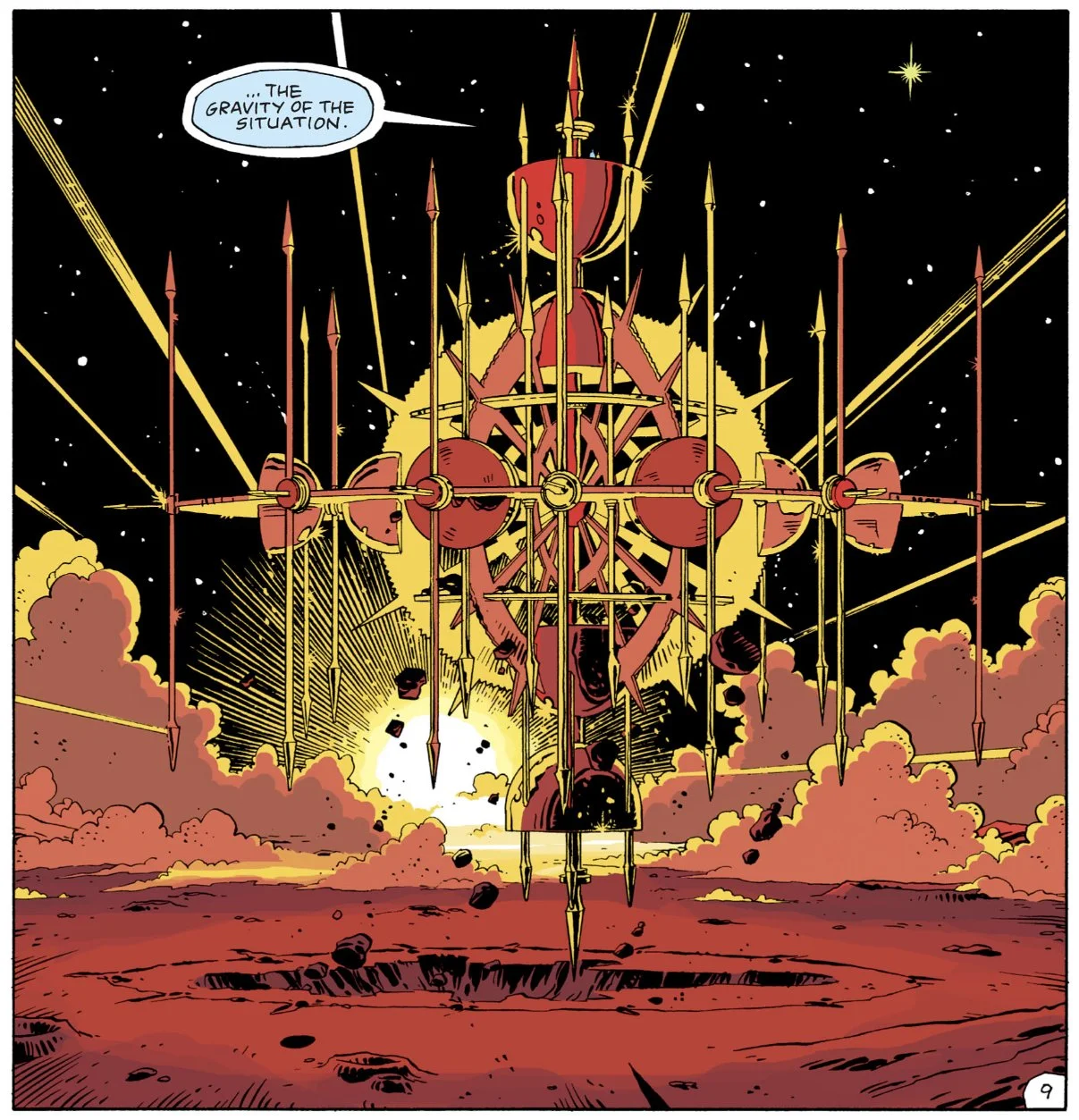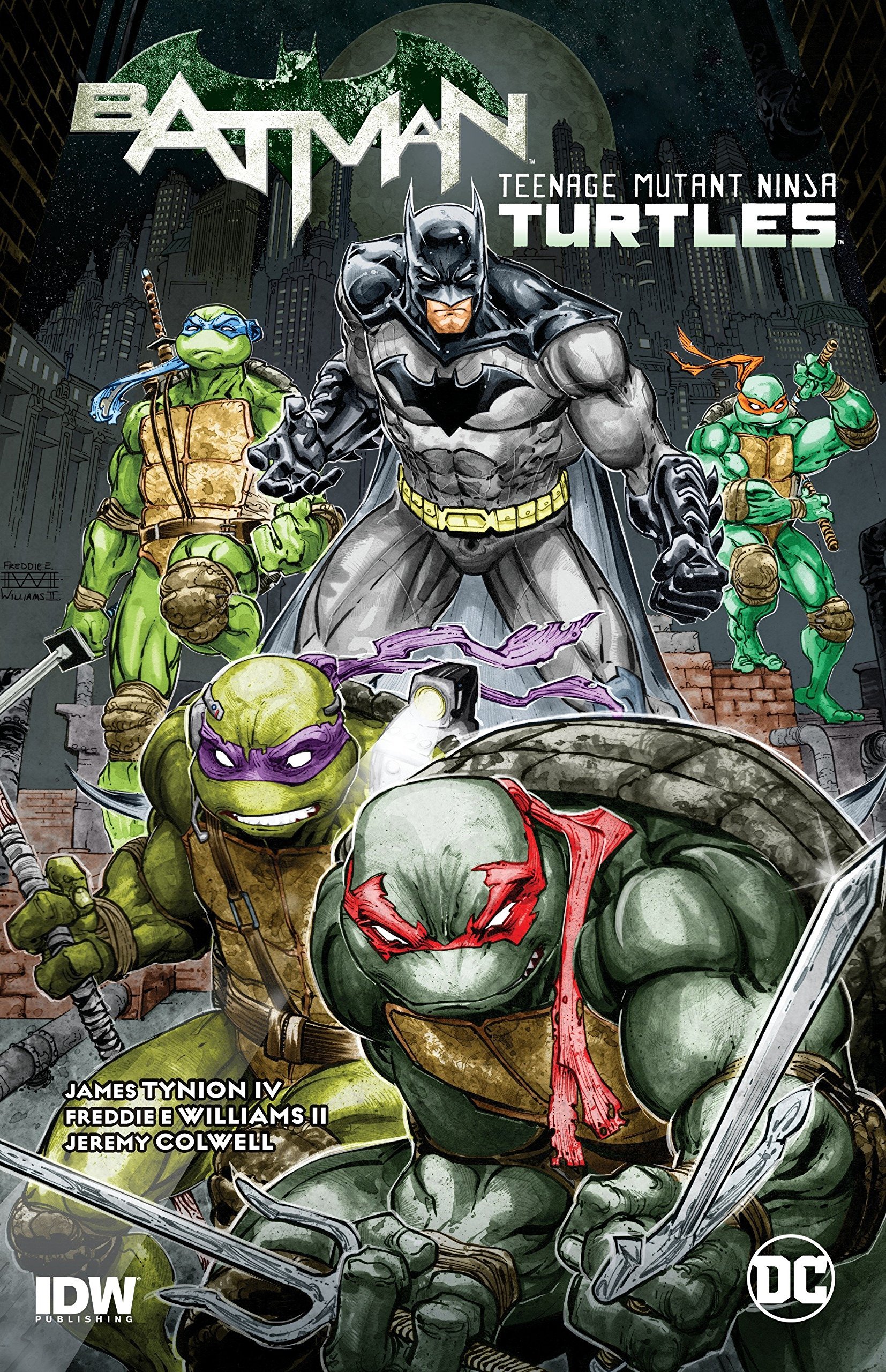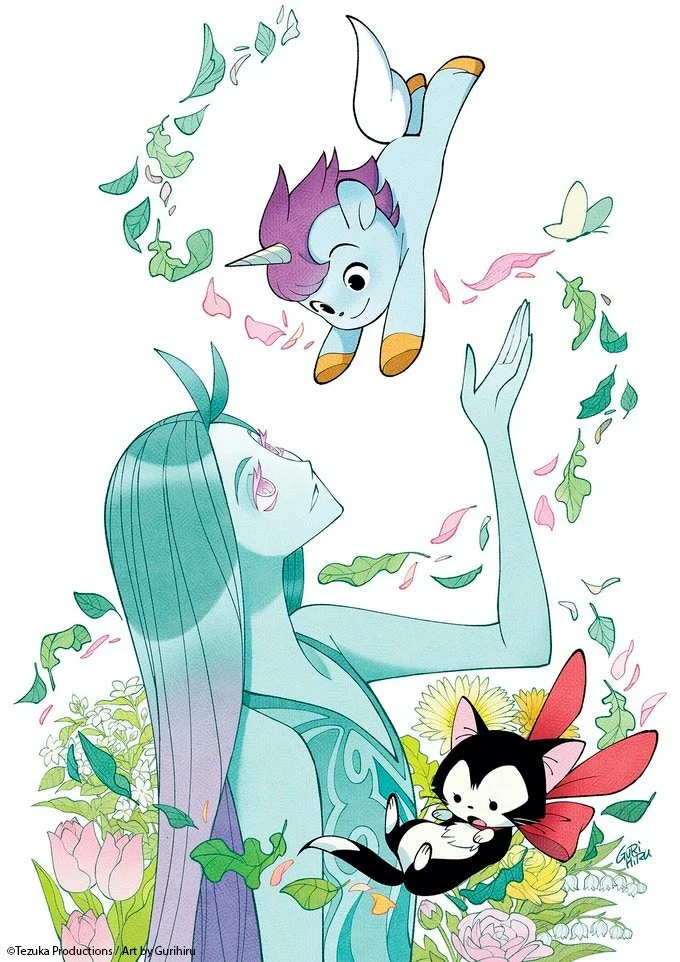Man Without Fear...By The Year: Daredevil Comics in 2001, the Extras
By Bruno Savill De Jong — Much like the comic book boom of 1986, or the boom around Daredevil’s 30th anniversary in 1994, the early 2000s was a clustered period for Daredevil. The title was at the forefront of Marvel Knights, which signaled a shift for the entire company, solidified when its architect Joe Quesada quickly became Editor-in-Chief.
Daredevil’s prioritization here shows the character gaining renewed recognition, leading to greater investment in the title. Additionally, the superhero craze had begun to grip Hollywood, with the success of Blade, Spider-Man and X-Men paving the way for Daredevil’s own big-screen adaptation in 2003. All these factors mean that Man Without Fear…By the Year has some additional storylines to investigate outside of reliable single-volume history.
Daredevil: Ninja
Written by Brian Michael Bendis
Pencils by Rob Haynes
Inks by Rob Haynes
Colors by David Self
Letters by Comicraft
Daredevil: Ninja is most significant for being Brian Michael Bendis’ first published work on Daredevil, shipping in December 2000 only two months after making his mark with Ultimate Spider-Man. This 3-issue miniseries isn’t remembered for much else, with Bendis’ contributions to the Hand and Chaste mythology largely ignored. Daredevil himself seems profoundly uninterested in these Ninja clans latest battle, acting aloof and sarcastic during his forced involvement. In fairness, the Chaste do spend the whole first issue fighting him as a “test” before drugging him and kidnapping him off to Japan in the second, so it’s understandable for Matt to be a bit cranky.
Still, Bendis’ distinctive staccato dialogue feels misplaced here, out of step with the supposedly grandiose story he is telling. Daredevil: Ninja supposedly reveals how Daredevil’s sensei Stick was the reincarnation of a legendary Japanese warrior, whose future iteration has just been discovered. But this is so inconsequential to the story, and mired in generic prophecy and destiny malarkey, that it has no impact. The starting-point of Daredevil: Ninja is him trying to retrieve Stick’s “stick,” which feels like a side-quest from the main mission, not helped by the very broad and undetailed art by Rob Haynes or its problems with pacing.
The result is a miniseries stretched so thin it seems largely pointless. As mentioned, most of the first issue is Daredevil fighting the Chaste as a “test.” The second issue then has him suddenly in Japan, infiltrating a Hand compound, before travelling back to America in the final issue for another nondescript battle. There isn’t really any development or dramatic stakes, with Rob Haynes tendency towards largely undetailed full-page splashes making it appear like Daredevil: Ninja is just killing time.
Indeed, during the airport battle in issue 3, the Chaste simply abandon Daredevil mid-fight, a bizarrely anticlimactic ending of his involvement. Bendis himself is unhappy with Daredevil: Ninja, calling it “a failure.” At least its distinction from the rest of Bendis’ acclaimed work on Daredevil means it is an insignificant one.
Daredevil/Spider-Man
Written by Paul Jenkins
Pencils by Phil Winslade
Inks by Tom Palmer
Colors by Matt Milla
Letters by Troy Peteri (1), Jason Levine (2-4)
While Brian Michael Bendis was one writer who prospered during the Marvel Knights era, Paul Jenkins is one who helped found it. Jenkins wrote the acclaimed Inhumans miniseries, alongside a series introducing The Sentry, a character whom would prove important to the Marvel Universe in the 2000s (especially after Bendis utilized him). Jenkins himself never exactly took over the Marvel Universe, but he’s a reliable journeyman on series like The Incredible Hulk and Peter Parker: Spider-Man. It makes sense that, during this period, Jenkins penned the crossover miniseries Daredevil/Spider-Man.
Buy It Here: Daredevil / Spider-Man
Spider-Man and Daredevil have been intertwined since Matt Murdock’s creation, the cover of Daredevil #1 asking readers “remember when we created Spider-Man?” the two red-clad, New York, street-level crusaders have often bumped into one another while swinging through the city, popping up to assist one another and developing a deep friendship. A personal favorite crossover is within the “Death of Jean DeWolff” story-arc (Peter Parker, The Spectacular Spider-Man #107-110).
The two have matured to compliment one another well, with Spider-Man as the younger, more jovial and “idealistic” one compared to Daredevil’s more mature, serious and pragmatic outlook. Despite this, the two never shared their own separate team-up miniseries, until 2001’s Daredevil/Spider-Man (confusingly 2002 had an action-packed one-shot where the two heroes purposefully do not meet – which is fun but not worth in-depth discussion – called Spider-Man/Daredevil).
However, web-heads hoping for an egalitarian team-up will be disappointed. Daredevil/Spider-Man is almost entirely a Daredevil story, being from his perspective, featuring his supporting characters (Foggy and Black Widow) and concerning his rogues gallery; an enhanced Gladiator, Stilt-Man and Owl being led by the obscure, resurrected DD villain Copperhead. Passing reference is made to how The Kingpin is a villain for both heroes, but even then, Matt Murdock is the only one who interacts with Wilson Fisk (as these rogues’ plan to start a turf war with him), with Spider-Man not even shown outside his costume.
Daredevil/Spider-Man does feature Peter Parker given an out-of-nowhere rant that justifies his non-stop wisecracking as a coping mechanism (“I kid through all this lunacy because that’s my way of dealing with it”), contrasting Daredevil’s solemn brooding. Yet this differing attitude doesn’t factor into the story until this very moment. Otherwise, Daredevil/Spider-Man is simply a Daredevil story where Spider-Man plays as big a part as Foggy Nelson.
Even then, something about Daredevil/Spider-Man feels off. The first few issues introduce these strange conspiracy theories, where an imprisoned convict must communicate with Matt in code about “7 M.O.,” which translates to OWL upside-down. How this person knew about the Owl, why it was so secretive, remains unexplained. Plus, the last issue reveals the whole plot was concocted by Copperhead instead, acting as a spawn of Satan, completely departing from the previous issues established tone. Daredevil/Spider-Man jumps around ideas – including the idea Matt is “forced” to work for Kingpin under blackmail of a gang war – which means none of them have any impact.
Daredevil/Spider-Man reads fine on a page-by-page basis, but begins to suffer once you take a step back. Jenkins does manage to capture the tone and persona of these characters (except perhaps an oddly pornographic Black Widow) while Phil Winslade puts them in exciting action scenes. It’s simply that the story does not add up, resulting in an ultimately hollow mess.
Daredevil Yellow
Written by Jeph Loeb
Art by Tim Sale
Colors by Matt Hollingsworth
Letters by Wes Abbott
Our final supplemental Daredevil story is one of this most fondly remembered; Daredevil: Yellow by Jeph Loeb and Tim Sale. Loeb and Sale are frequent collaborators who made names for themselves with DC miniseries’ focusing on the days of Batman (The Long Halloween) and Superman (Superman For All Seasons). Loeb and Sale subsequently moved onto Marvel, where they created “Year One” “colour” books like Spider-Man: Blue, Hulk: Gray and Captain America: White. But their first venture was Daredevil: Yellow.
Buy It Here: Daredevil Yellow
(It’s also worth mentioning Jeph Loeb, who became Head of Marvel Television in 2010, garnered significant racial controversy during his involvement in the Netflix Daredevil and Iron Fist shows from allegedly insulting and downplaying Asian storylines.)
Yellow is, of course, the color of Daredevil’s first costume, and the book involves Matt reminiscing on his early days of crime-fighting in a letter to the deceased (and blonde-haired) Karen Page. (Spider-Man: Blue would adopt a similar structure in Peter Parker creating a tape to the late Gwen Stacy). Despite some overlaps, Daredevil: Yellow differs from Frank Miller’s earlier 1993-94 “origin” The Man Without Fear. Both in how that book ended as Matt first donned his Daredevil costume (completely side-stepping the Yellow phase), and the overall tone.
The Man Without Fear emphasises the tragedy and anger within Matt Murdock, while retrofitting Miller’s additions to his story – like Elektra, Stick and Kingpin – in Daredevil’s origin. Daredevil: Yellow, meanwhile, recreates the specifics of Daredevil #1-4 (including battles against Electro, Owl and the Purple Man, alongside Foggy Nelson’s infatuation with and near-proposal to Karen Page) in a bittersweet ode to how jovial Daredevil used to be.
Yellow luxuriates in this retro pop-art past, a “Golden Age” where Daredevil reflects “villains would talk a lot back then… the ones in costume never used to kill anybody.” It steps outside of the brooding tortured Daredevil to reflect upon the devil-may-care acrobatics and sense of adventures from those Silver Age instalments. It combines these dazzling displays of old-fashioned supervillains with the office hijinks of the classic Nelson & Murdock (& Karen) dynamic, which functions almost like a workplace romantic comedy. Tim Sale’s thin and soft linework perfectly matches this kind of reflection, being purposefully exaggerated like a funhouse mirror of the past, yet still imbued with a hint of sadness.
Indeed, there is a melancholy that hangs over Daredevil: Yellow, subtly conveyed by how the bombastic colours of Matt Hollingsworth are somewhat faded and muted. Not only does Karen’s death frame this comic, but the murder of Matt’s father Battlin’ Jack Murdock is again made a central moment, which spurs Matt’s sense of perseverance and justice. The comic emphasise how much Matt looked up to his dad, finding a kinship through his Daredevil activities (including confronting the Fixer’s men in his das’s old gym) so that Daredevil: Yellow becomes as much about working through this grief as with Karen’s.
“When you’re young, you think you are going to live forever,” Matt nostalgically muses, and Daredevil: Yellow tracks his impetuous beginnings when his crime-fighting career was still fresh. Loeb once opined how Daredevil differed from Batman in how Daredevil managed to “get justice” for his murdered parent, while Batman was denied that cathartic closure. Therefore, Daredevil is (at least back then) more well-adjusted than the Dark Knight. A significant moment comes when Daredevil, amidst fighting Electro, wonders why he is bothering with these super-human battles since he has caught his father’s killers and hasn’t sworn an oath for generalized justice or “great responsibility.” Essentially, Daredevil lacks a greater motivation.
An undercurrent of Daredevil: Yellow is therefore moving through the past in order to overcome it, creating a sense of purpose through tragedy. Daredevil stitches his yellow costume from his father’s boxing robes, which becomes a metaphor for being comforted (but also enshrouded) in a Golden Age. It’s through Karen’s coy comment that “red is [her] favorite color” that Daredevil switches to his classic costume, symbolizing his move from a specific childhood love into a new, adult one.
Daredevil: Yellow can be sentimentalist and over-simplified, but it still works as an exciting reinterpretation of Daredevil’s early years, and an emotionally pregnant ode to how getting through grief needn’t mean forgetting those that you have loved and lost.
Read classic Daredevil Comics!
Check out past installments from The Man Without Fear…By The Year!
Check out Bruno Savill De Jong’s last regular series, Gotham Central Case by Case!
Bruno Savill De Jong is a recent undergraduate of English and freelance writer on films and comics, living in London. His infrequent comics-blog is Panels are Windows and semi-frequent Twitter is BrunoSavillDeJo.












